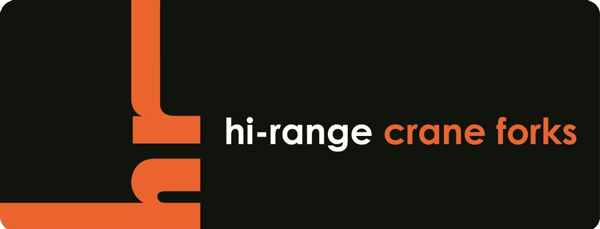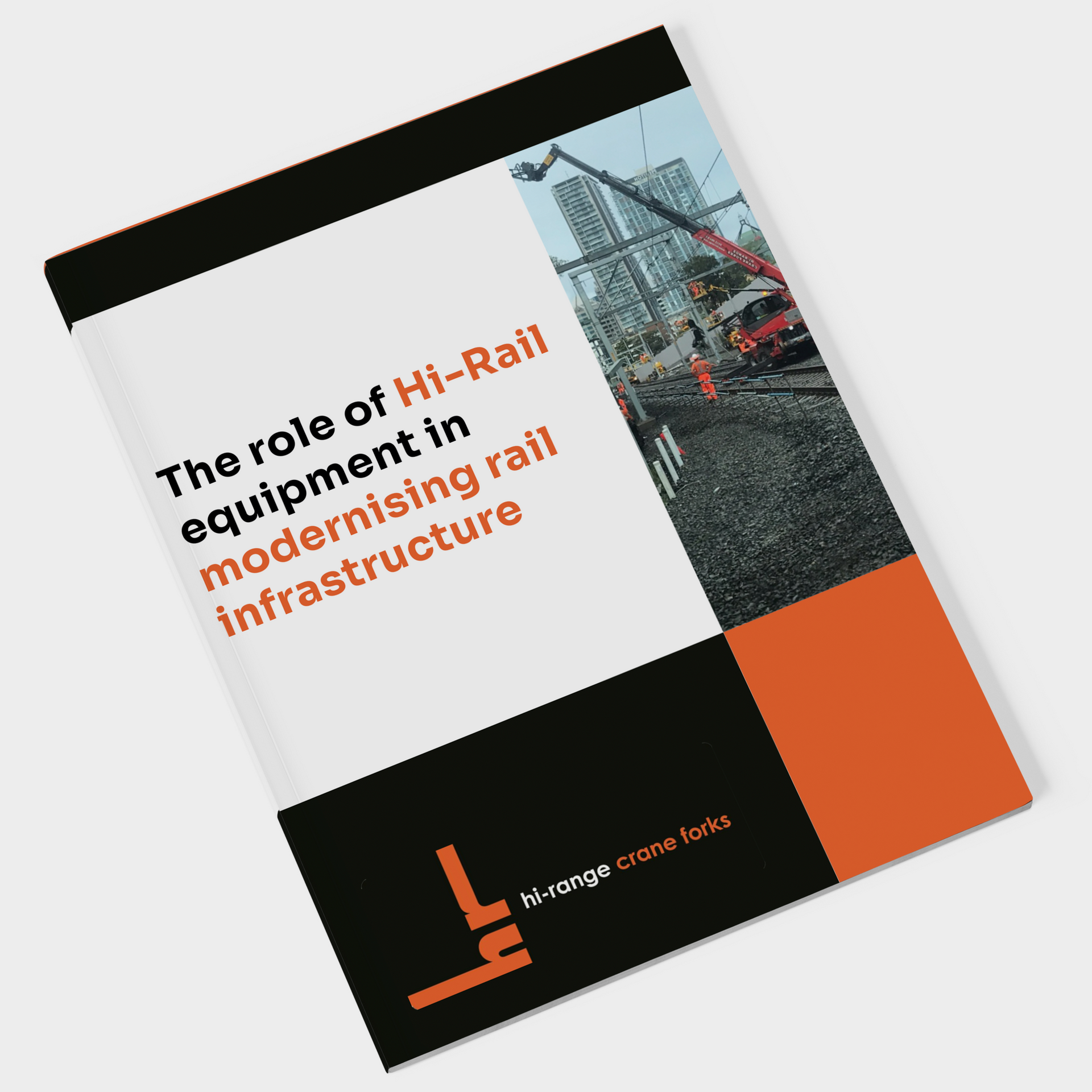17/02/2023
Introduction
Hi-Rail equipment is currently playing a key role in modernising rail infrastructure around the world. With a range of current railway construction projects progressing nationwide, each are benefiting greatly from the advantages of Hi-Rail equipment.
Due to growing population numbers and a recent surge in technological developments, there has been a significant growth for railway initiative and construction projects throughout Australia, including New South Wales.
According to the NSW Government Public Transport Patronage statistics, over 20,000 people used train systems throughout December 2022 to travel. Travel by train was the most popular method of transport for NSW throughout 2022, and there has been a steady rise since September 2021 in public transport use since COVID-19.
Australia needs railways to be more efficient, more aesthetically-pleasing, and functional, and multiple railway construction projects within NSW have identified Hi-Rail equipment as the best way to achieve these results.
Hi-Rail equipment can operate along existing tracks to allow for superior access to railway construction sites. Hi-Rail equipment offers the advantage of a compact design which is capable of traversing beneath power lines and throughout station locations.
Choosing Hi-Rail equipment for the modernisation and construction of rail infrastructures has become commonplace due to the superior level of access and safety they offer. When used for the modernisation of railways, this equipment is helping to make waves in the process of installing, maintaining, and updating railways.
What you will learn from this publication
This document aims to address three key topics:
- The safety risks involved with using traditional equipment on city modernisation-based construction sites
- How Hi-Rail equipment can access the tight spaces found in Sydney Metro areas, and minimise safety risks
- Why railway modernisation construction sites are relying on Hi-Rail equipment to complete their project
The limitations of rail construction in NSW
Some of the target areas in the general push for NSW trainline modernisation include trainlines running through Sydney City areas. For projects like Sydney Metro, these construction efforts will require underground, tunnel, and tight-access constructions. This is where regular equipment, like telehandlers, cranes, trucks, and EWP’s must be able to navigate these small city areas.
Equipment size limitations
One of the biggest limitations that come with using traditional equipment for railway modernisation projects is size, since traditional equipment may not be compact enough to fit in these small station areas to complete construction easily.
According to an applied sciences study into railway overhead wiring structures in Australia, “When a single overhead structure fails, operation of trains will be suspended and causes economic loss to the rail company and commuters”. To prevent these issues to overhead powerlines and to provide ample access for construction equipment to work on railways, it is imperative to choose equipment which suits the size of rail corridors in Sydney’s city areas.
Rail access limitations
In order to bring traditional construction equipment to desired railways, access needs to be provided via a roadway. This equipment is then able to be navigated throughout desired sites, however movement can become difficult in small access places. If roadways are blocked or equipment is too large to operate beside railway lines, this can impact the equipment’s use in small spaces such as tunnels or bridges.
For equipment like cranes, surrounding buildings, structures, and terrain may experience limited equipment operational capabilities, even posing a safety risk to the construction worksite. Transport Sydney Trains’ Guide to Working with Sydney Trains says, “When working around and in the rail corridor it is important to consider the potential impact [and] potential limitations to the planning and delivery of your project.”
Railway safety risks
When working on railways, there are significant safety risks involved. Live power lines and tracks pose a risk to workers but navigating equipment throughout a site full of multiple obstacles can also pose a risk. As an example, completing crane work beside a track leaves possibilities for collapse or contact with overhead wires, which can be fatal. These risks are always involved when using machinery to complete railway constructions beside a track.
According to Transport Sydney Trains’ Guide to Working with Sydney Trains, “construction work carried out near Sydney Trains’ infrastructure or operations is defined as high risk.” This is in part due to the risk that operating traditional equipment can pose, since traditional construction equipment is not built or designed specifically for operation within railway areas.
How Hi-Rail equipment is modernising NSW’s trainlines
With the NSW Government in Australia allocating a further $2 billion to support Sydney Metro Construction, construction equipment that can navigate the various tight-access areas found in NSW’s railway corridors are vital due to the importance of train transport to NSW’s public transport system. As NSW train lines modernise, the equipment working on these projects must in turn do the same.
Hi-Rail equipment is designed specifically for railway use
Choosing Hi-Rail equipment to complete railway projects has become one of the best ways to ensure unlimited access, superior safety, and efficient results. It is becoming commonplace to use Hi-Rail equipment as a way to ensure site access throughout these constructions remains possible. Many of these new constructions are carried out throughout tightly-packed city areas, meaning traditional mobile or tower cranes are far less accessible.
Hi-Rail cranes are designed to operate by being placed on tracks and traveling along the railway to carry out construction where required. This specialised compact design means that risks like nearby hazards are limited, and where traditional equipment may encounter issues, Hi-Rail cranes do not.
Hi-Rail equipment is much safer to operate
Throughout the process of navigating equipment to sites, completing assembly, and operation, there are a range of safety risks involved. For railway construction equipment like cranes, using traditional equipment that is not customised to suit railway corridors may be cause for concern.
According to Safe Work Australia, “If there is a possibility of cranes colliding with other plant or structures you should position the crane to… minimise the risk of collision.” Hi-Rail cranes are able to operate within a smaller operation area, as they are fixed to the railway area of operation, therefore offering minimised risk. As previously stated, modernising railwayswill often require construction in tight spaces, and so choosing Hi-Rail is choosing equipment specialised for operation in these urban areas.
Because of the added benefits of utilising Hi-Rail equipment, many construction sites throughout NSW are utilising fixed-rail machinery to complete their work. It is vital for these construction efforts to be completed safely for personnel working on the project, and efficiently for those looking to use the new and modernised railway systems they have been anticipating.
Summary
As Australia moves towards the modernisation of train networks, work within city areas, tunnels, or bridges has become a necessary part of completing railway constructions. Within these difficult-access areas, there are a range of risks involved when working in specialised train corridors. To minimise these risks, it is important to use equipment which is more compact and capable of functioning safely within these environments.
Using Hi-Rail equipment as part of nation-wide efforts to modernise railway lines has become the safe, smart, and efficient choice. Because of the highly specialised designs and features that are part of Hi-Rail equipment, modern railway constructions can mitigate safety risks on site and ensure machinery can reach desired construction areas.
Because organisations such as Transport Sydney Trains state in their Guide to Working with Sydney Trains that it’s important to ensure an allowance for working safely near rail infrastructure and services that exist outside the rail corridor, construction teams looking to modernise railways have chosen Hi-Rail as the safest equipment option that will meet these standards.
Hi-Rail equipment now has become one of the trusted equipment options when it comes to completing railway modernisation projects throughout NSW. This is due to their specialised design that ensures safety and access to rail corridor locations.
- Hi-Rail equipment is capable of completing junction upgrades, track expansions, slope stabilisation, signal works, and rail works using specialised mechanisms.
- Hi-Rail equipment is trusted for railway modernisation efforts due to their specialised capabilities
Get a quote on rail track laying and more
Like what you see? Get in touch with our friendly team for more information on what services we can secure for your next rail construction project. Hi-Range Crane Forks can organise and assist with full-service rail construction packages and individual service contracts alike. From track clearing to installing continuous welded rail, our teams can provide assistance to commercial and civil projects of any size and scope across South Australia and New South Wales.

